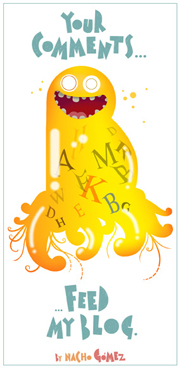
I know..you´re an English teacher..so you hate maths, right? Most of us are pretty poor at maths, let´s be frank. However, that doesn´t mean to say we should neglect this area in class, and not cater for our "logical - mathematical" students. Here are a couple of fun ideas. Do you like them? Send me a message and I´ll publish more!
My favourite: Grey Elephants from Denmark.
Tell ss that you are going to read their minds and guess what they are going to tell you at the end of the activity. Write “Grey elephants from Denmark” on a piece of paper, without letting anyone see what you have written. Give ss the following instructions:
1. Think of a number between 2 to 10.
2. Multiply the number by 9.
3. Add the two numbers of the total together. (The answer will always be 9)
4. Take 5 away from your answer. (The answer will always be 4)
5. If your answer is 1, it equals A, if 2= B, if 3= c, if 4= D. (The answer will
always be D).
6. Think of a country in Europe beginning with D (only Denmark).
7. Think of an animal (not a fish or bird) beginning with the second letter of the country (almost always will be elephant!)
8. Think of the colour of your animal (Elephants are always grey, you are almost guaranteed to end up with grey elephants from Denmark).
9. Now show pupils your sentence!
Surveys: Free Time Pies
Ask each student to list their hobbies and to order them in terms of frequency. Ask them to draw a pie diagram, in which the different sectors represent hobbies, and the size of the sector represents frequency. The ss label the sections of the diagram with the names of the activities.
Then they write on another piece of paper a few sentences to describe their routines, eg. I sometimes go to the cinema; I always watch Peking Express on Sunday night, etc. Collect the pieces of paper and put them in a box or on the table. Display the pie diagrams around the room. Each student takes a piece of paper and reads it. They then have to find the matching pie chart and find the student who wrote the information. To do this, they have to circulate and look at the pie charts and then ask classmates about their hobbies, eg. When do you go to the cinema?
Quantifier Survey
Quantifier Survey
Prepare a set of Quantifier Survey statements, which are a series of sentences with most, some of us, none of us, we all, etc… Give out the statements to each student or group of students. They read the statements. They have to find out if the statement is true, so they need to prepare questions to ask other students, eg. Do you live near here? They mingle and collect responses. They count the responses and decide if their statement is true. If not, they must write a new statement which is true for the class. Then each student or group reports their findings, eg. “19 out of 20 of us live within one kilometre of the school so it´s true to say most of us live near here”.





No comments:
Post a Comment